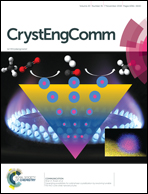A novel approach for tailoring structural, morphological, photoluminescence and nonlinear optical features in spray coated Cu:ZnO nanostructures via e-beam
Abstract
In this article, we present the investigations on modification of structural, morphological, and optical properties of spray coated Cu doped ZnO (CZO) thin films by electron beam. Glancing angle X-ray diffraction reveal polycrystalline nature of the CZO films and indexed to hexagonal wurtzite structure. Notable reduction in FWHM values upon e-beam treatment is attributed to the irradiation induced reorientation of grains. The Gaussian deconvolution at ambient temperature photoluminescence (RTPL) spectra demonstrates broad visible bands for all the spectra which is caused by presence of various structural and native defects like oxygen, zinc, zinc interstitials and antisite oxygen defects. The increase of the electron beam dosage from 0 kGy to 20 kGy results in the decrement of the PL intensity endorsing the fact that e-beam irradiation can act as a luminescent activators which can effectively regulates the luminescence behavior of CZO thin films. The Raman spectra of CZO show a successive reduction in the intensity of Raman peaks especially for the dominant peak around ∼439 cm−1 upon e-beam treatment. Increase in localized defect states results in decreasing energy band gap magnitudes for the nanostructures. The third order nonlinear optical properties of the films have been studied using Z-scan and laser stimulated third harmonic generation technique (LITHG). Enhancement of third harmonic frequency conversion efficiency of CZO nanostructures is caused by electron beam induced photoexcitation and relaxation processes. The transition properties of saturable absorption (SA) and reverse saturable absorption (RSA) mechanism upon e-beam irradiation for the CZO films can be used for production of optical limiters, all-optical logic gates, optical triggers, mode storage and fast optical switchers etc.



 Please wait while we load your content...
Please wait while we load your content...